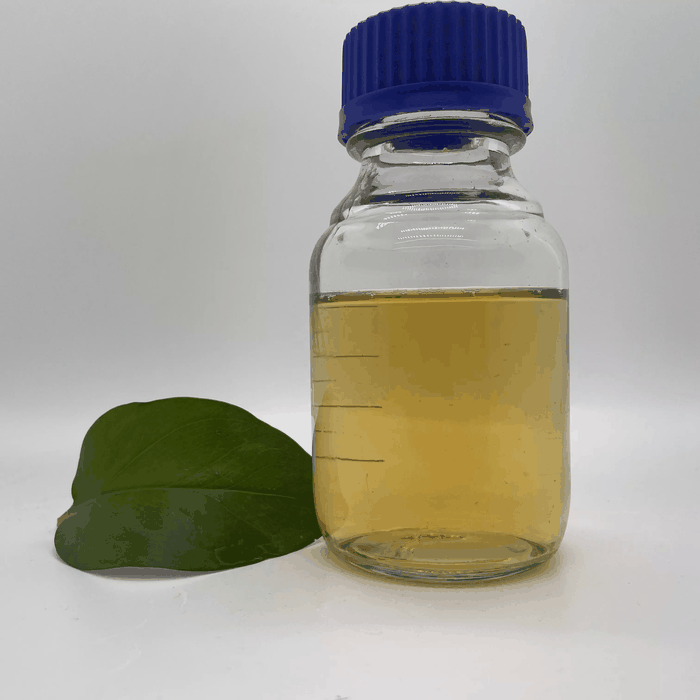Parsley Seed Oil
- CAS NO.:8000-68-8
- Molecular Weight: 0
- MDL number: MFCD00241319
- EINECS: 620-876-3
- Update Date: 2023-05-25 18:01:02
What is Parsley Seed Oil?
Chemical properties
Parsley leaf oil is produced by steam distillation of the aerial parts of the plant, including the immature seeds. It is a yellow to light-brown liquid with the typical odor of the herb.
d2525 0.908–0.940; n20D 1.5030–1.5300; α20D ?9 ° to +1 °; acid number:max. 2; soluble in 95% ethanol; solutions may be opalescent.
The oil consists mainly of monoterpene hydrocarbons. Its main constituent is 1,3,8-menthatriene, which is important for the aroma of parsley leaves.
Chemical properties
Parsley Seed Essential Oil: Parsley seed essential oil is obtained by steam distillation of the ripe seeds in approximately 1.5 to 3.5% yields. The oil has a warm, spicy odor with a bitter, warm, aromatic taste. Parsley Leaf Oil: Parsley leaf oil is obtained by steam distillation of leaves and flowering tops in very low yields (0.06%). This oil exhibits a much harsher, herbaceous note than the seed oil. Parsley Herb Essential Oil: Parsley herb essential oil is obtained by distilling the whole plant, excluding the root. It is a pale-yellow to greenish-yellow liquid with a pronounced herbaceous odor and a warm, bitter, slightly burning taste.
Physical properties
Parsely herb oil: It is a yellow-to-light brown liquid. It is soluble in most fixed oils, mineral oil and alcohol. It is slightly soluble in propylene glycol and is insoluble in glycerin. Parsley Seed Oil: It is a more or less viscous, yellowish- to-yellow-amber liquid that sometimes deposits crystals on being chilled. Seed oil is soluble in most fixed oils, mineral oil and alcohol. It is slightly soluble in propylene glycol and is insoluble in glycerin. For additional characteristics refer to Burdock (1997).
Occurrence
Found in the seed of the herb Petroselinum sativum Hoffm. (Apium petroselinum l., Carum petroselinum Benth et Hook) of the family Umbelliferae.
The Uses of Parsley Seed Oil
Parsley Seed Oil is traditionally used for soothing and anti-itching treatment in dermatological disorders. It may also be used as a preservative.Parsley Seed Oil is extracted from the plant’s seeds that contain an oil called apiol. It may cause allergic reactions in sensitive skin.
The Uses of Parsley Seed Oil
Flavoring in foods and pharmaceuticals.
Preparation
By careful steam distillation of the ripe seed.
Definition
Extractives and their physically modified derivatives. Petroselinum crispum.
Essential oil composition
Main constituents, in addition to apiole, include α-pinene, myristicin, traces of conjugated coumarins, ketones, aldehydes, a solid hydrocarbon (m.p. 69°C) and traces of phenolic compounds (Burdock, 1997).
Pharmacology
In pharmacological studies of Egyptian P. hortense (P. sativum), plant extracts stimulated spontaneous activity of rat uterus and intestine in vitro and lowered blood pressure and respiratory movements in anaesthetized dogs. Growth of rats was stimulated and uterine weight was increased by parsley in the diet. The results suggested therapeutic uses of P. hortense as a laxative, hypotensive, ecbolic and emmenagogue, and promoter of growth (Sharaf et al. 1969).
Safety Profile
Moderately toxic by ingestion. A human skin irritant. When heated to decomposition it emits acrid smoke and irritating fumes
Properties of Parsley Seed Oil
| Boiling point: | 290 °C(lit.) |
| Density | 1.05 g/mL at 25 °C(lit.) |
| refractive index | n |
| FEMA | 2836 | PARSLEY OIL |
| Flash point: | 125 °F |
| color | Yellow to light-brown liquid |
| Odor | odor of parsley |
| CAS DataBase Reference | 8000-68-8 |
| EPA Substance Registry System | Parsley oil (8000-68-8) |
Safety information for Parsley Seed Oil
| Signal word | Danger |
| Pictogram(s) |
 Flame Flammables GHS02  Exclamation Mark Irritant GHS07  Health Hazard GHS08  Environment GHS09 |
| GHS Hazard Statements |
H226:Flammable liquids H302:Acute toxicity,oral H315:Skin corrosion/irritation H317:Sensitisation, Skin H319:Serious eye damage/eye irritation H334:Sensitisation, respiratory H335:Specific target organ toxicity, single exposure;Respiratory tract irritation H410:Hazardous to the aquatic environment, long-term hazard |
| Precautionary Statement Codes |
P210:Keep away from heat/sparks/open flames/hot surfaces. — No smoking. P261:Avoid breathing dust/fume/gas/mist/vapours/spray. P280:Wear protective gloves/protective clothing/eye protection/face protection. P284:Wear respiratory protection. P304+P340:IF INHALED: Remove victim to fresh air and Keep at rest in a position comfortable for breathing. P370+P378:In case of fire: Use … for extinction. |
Computed Descriptors for Parsley Seed Oil
Abamectin manufacturer
AOS Products Pvt Ltd
New Products
4-Aminotetrahydropyran-4-carbonitrile Hydrochloride (R)-3-Aminobutanenitrile Hydrochloride 4-AMINO-TETRAHYDRO-PYRAN-4-CARBOXYLIC ACID HCL 4-(Dimethylamino)tetrahydro-2H-pyran-4-carbonitrile 3-((Dimethylamino)methyl)-5-methylhexan-2-one oxalate 1,4-Dioxa-8-azaspiro[4.5]decane 5-Bromo-2-nitropyridine Nimesulide BP Aceclofenac IP/BP/EP Diclofenac Sodium IP/BP/EP/USP Mefenamic Acid IP/BP/EP/USP Ornidazole IP Diclofenac Potassium SODIUM AAS SOLUTION ZINC AAS SOLUTION BUFFER SOLUTION PH 10.0(BORATE) GOOCH CRUCIBLE SINTERED AQUANIL 5 BERYLLIUM AAS SOLUTION 2-Bromo-1-(bromomethyl)-3-chloro-5-nitrobenzene 2-Bromo-3-nitroaniline N-(3-Hydroxypropyl)-N-methylacetamide 3-Bromo-6-chloropyridazine 4-ethyl-3-nitrobenzoic acidRelated products of tetrahydrofuran








You may like
-
 8000-68-8 Parsley seed oil 98%View Details
8000-68-8 Parsley seed oil 98%View Details
8000-68-8 -
 1-Methyl-6-oxo-1,6-dihydropyridazine-3-carbonitrile 98%View Details
1-Methyl-6-oxo-1,6-dihydropyridazine-3-carbonitrile 98%View Details
99903-60-3 -
 1823368-42-8 98%View Details
1823368-42-8 98%View Details
1823368-42-8 -
 2-(3-(tert-butyl)phenoxy)-2-methylpropanoic acid 1307449-08-6 98%View Details
2-(3-(tert-butyl)phenoxy)-2-methylpropanoic acid 1307449-08-6 98%View Details
1307449-08-6 -
 Ethyl 3-(furan-2-yl)-3-hydroxypropanoate 25408-95-1 98%View Details
Ethyl 3-(furan-2-yl)-3-hydroxypropanoate 25408-95-1 98%View Details
25408-95-1 -
 2-Chloro-5-fluoro-1-methoxy-3-methylbenzene 98%View Details
2-Chloro-5-fluoro-1-methoxy-3-methylbenzene 98%View Details
1805639-70-6 -
 1784294-80-9 98%View Details
1784294-80-9 98%View Details
1784294-80-9 -
 Lithium ClavulanateView Details
Lithium ClavulanateView Details
61177-44-4